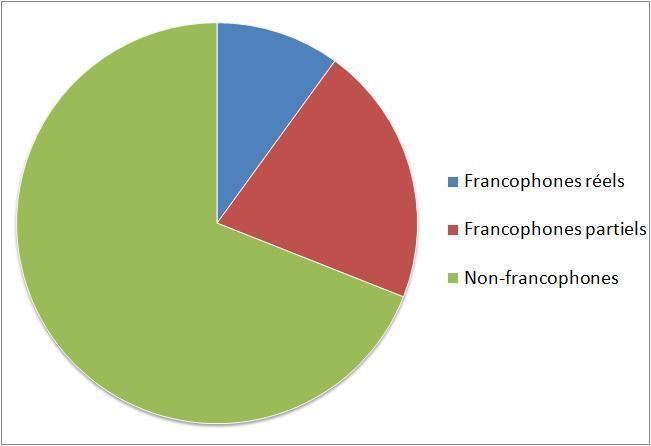 | ||
Senegal is a multilingual country: Ethnologue lists 36 languages, Wolof being the most widely spoken language.
French, which was inherited from the colonial era, is the official language of Senegal. It is used by the administration and understood by about 15–20% of all males and about 1–2% of all women. Senegal is a member State of the Organisation internationale de la Francophonie. A Senegalese, Abdou Diouf, held the position of its Executive Secretary between 2003 and 2014.
Several of the Senegalese languages have the status of "national languages": Balanta-Ganja, Hassaniya Arabic, Jola-Fonyi, Mandinka, Mandjak, Mankanya, Noon (Serer-Noon), Pulaar, Serer, Soninke, and Wolof.
In terms of usage, Wolof is the lingua franca and the most widely spoken language in Senegal, as a first or second language (80%).
Mande languages spoken include Soninke, and Mandinka. Jola (Diola) is a main language in the Casamance region. The Guinea Creole dialect, based on Portuguese is also spoken in that region. In 2008 Senegal, due to its historical connections to Portuguese colonisation in Casamance, was admitted as Associate Observer in the CPLP (Community of Portuguese Language Countries).
Education for the deaf in Senegal uses American Sign Language, introduced by the deaf American missionary Andrew Foster. A local language is Mbour Sign Language.
A report for the High Council of Francophonie in Paris stated in 1986 that in Senegal, 60,000 people spoke French as a first language and 700,000 spoke French as a second language. The total population of Senegal at the time was 6.5 million.
